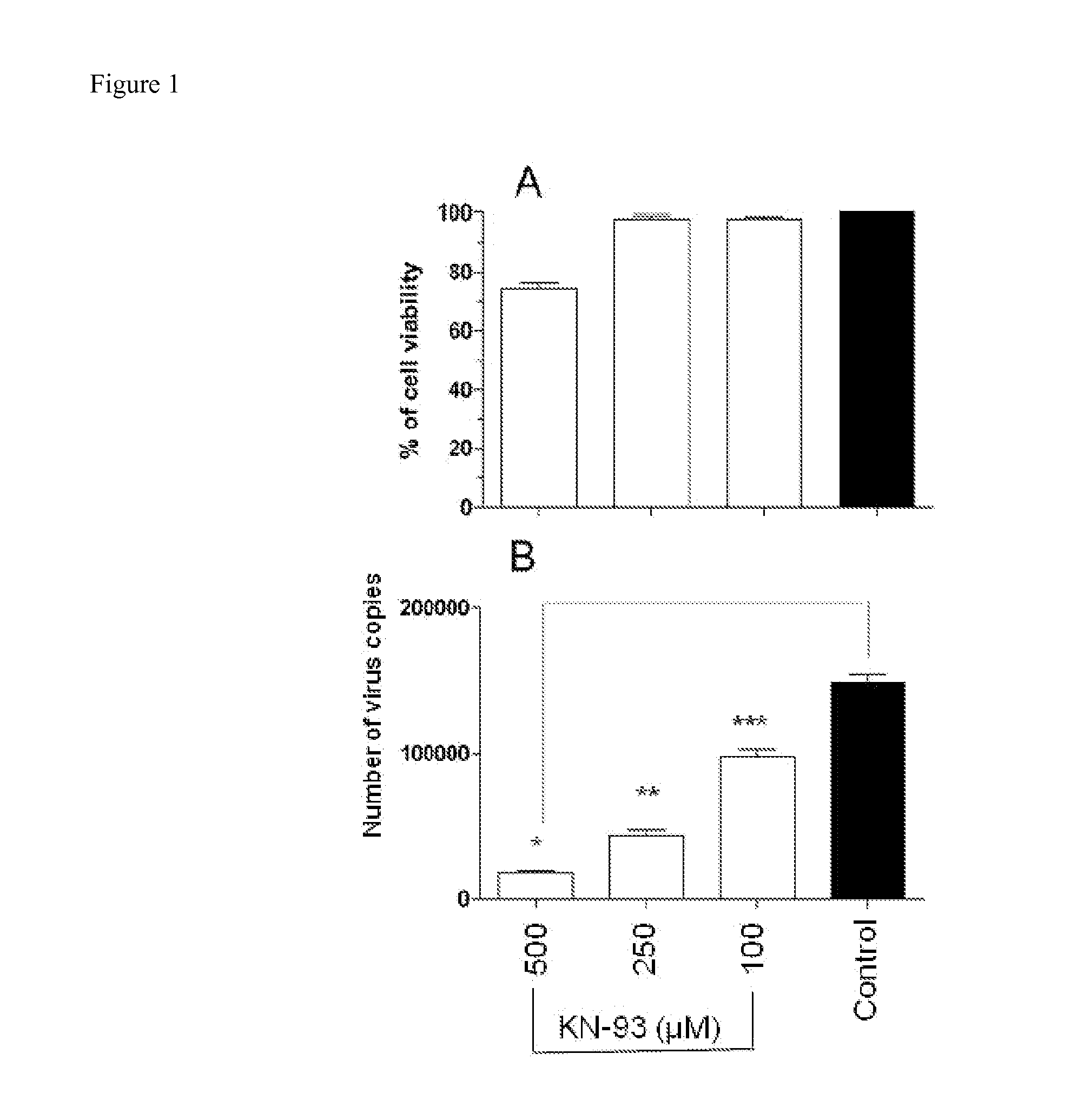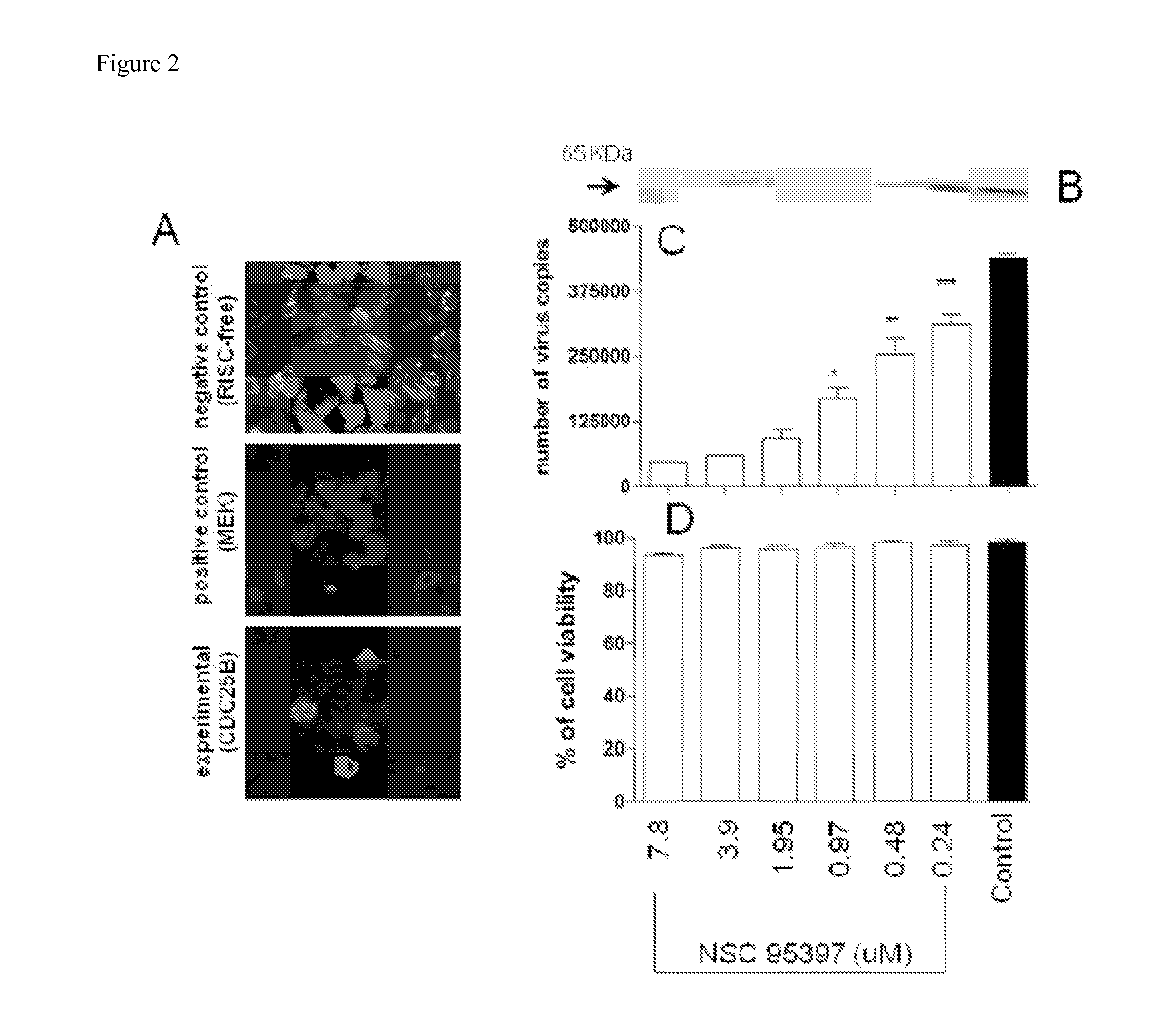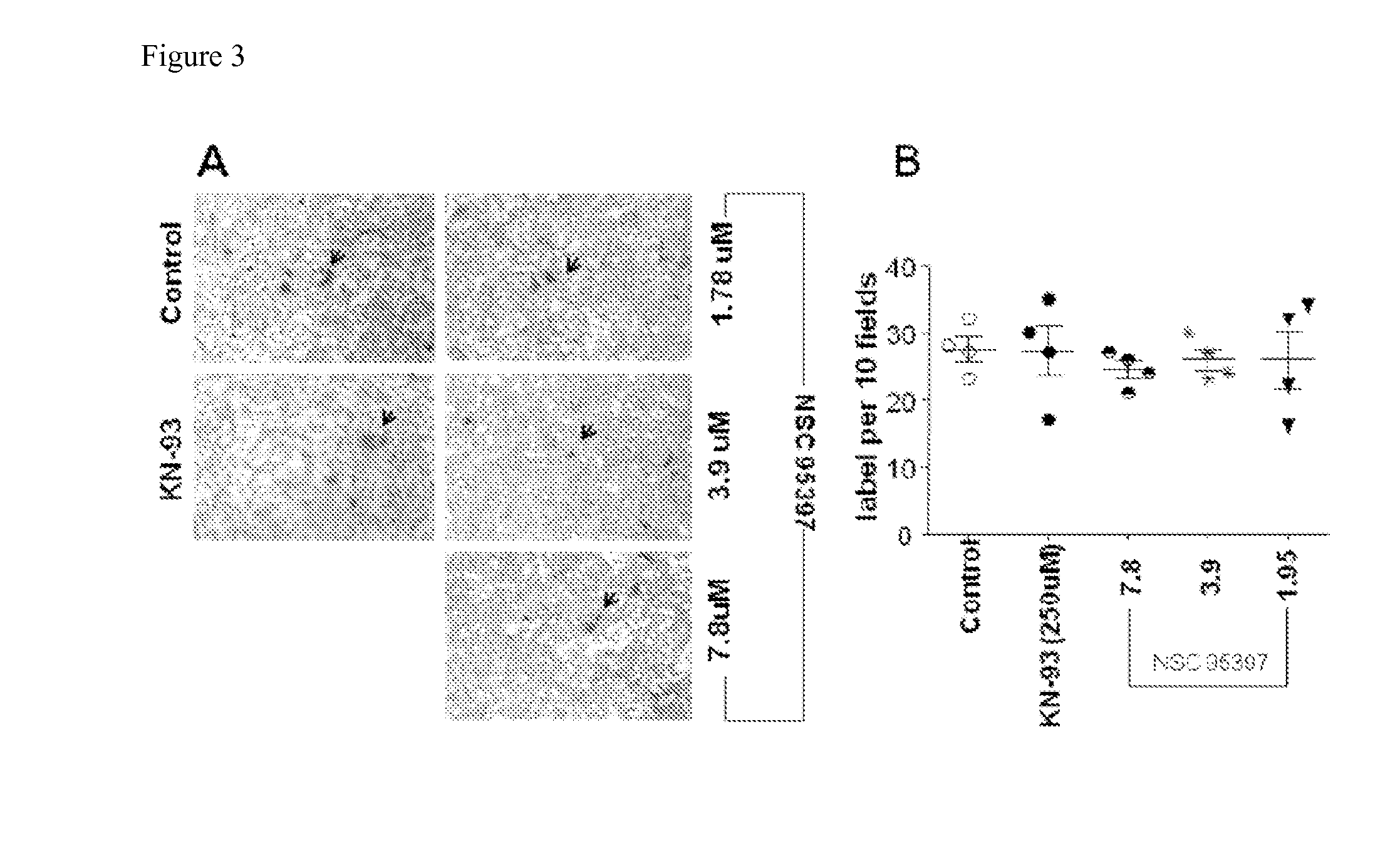Methods for Inhibiting Virus Replication
a virus and replication technology, applied in the field of methods for inhibiting virus replication, can solve the problems of not always meeting the population coverage demand, less efficacy, and not always available or effectiv
- Summary
- Abstract
- Description
- Claims
- Application Information
AI Technical Summary
Benefits of technology
Problems solved by technology
Method used
Image
Examples
example 1
[0075]Influenza A viruses continue to have a major health impact worldwide affecting people of all ages, but often have the greatest effect on the elderly, young children, and those vulnerable with underlying conditions. The most effective means for controlling infection is vaccination; however, there is a need for anti-viral drug options. Influenza M2 inhibitor and neuraminidase inhibitor drugs are available but drug resistance has emerged and spread. Research efforts have recently focused on identification of host genes that are essential for influenza replication as they offer potential targets for drug discovery and are refractory to the development of resistance. Using RNA interference high-throughput genome-wide assays to identify candidate host genes that are required during influenza replication, cell division cycle 25 (CDC25), a member of the CDC25 family of phosphatases, was identified as an important host factor required for virus replication. This study shows that CDC25B...
example 2
[0096]In the process of screening siRNAs to determine the effect of gene silencing on influenza virus (A / WSN / 33) replication, it was found that silencing the SLC22A8 gene in human type II respiratory epithelial (A549) cells inhibited influenza virus replication. Pathway analysis suggested this gene could be targeted by an existing drug, and that repurposing this drug may offer an avenue for antiviral therapeutics. Therefore, the SLC22A8 gene was targeted as a potential point of control for protection against influenza. Further research indicated that 4-(dipropylsulfamoyl)benzoic acid, commonly known under the brand name as Probenecid, serves as a chemical inhibitor of SLC22A8 gene. Because this drug is already on the market, having been approved by the FDA for use in the control of gout and for the support of antibiotic therapies, many of the challenges related to getting this drug to the market have already been addressed. This summary details the methods, to date, by which this la...
example 3
Targeting Cell Division Cycle 25 Homolog B (CDC25B) to Regulate Influenza Virus Replication
[0111]Influenza virus is a worldwide global health concern causing seasonal morbidity, mortality, and economic burden. Chemotherapeutics is available however rapid emergence of drug resistant influenza strains has reduced their efficacy, thus there is a need to discover novel anti-viral agents. In this study, RNA interference (RNAi) was used to screen host genes required for influenza virus replication. One pro-influenza virus host gene identified was dual-specificity phosphatase cell division cycle 25 B (CDC25B). RNAi of CDC25B resulted in reduced influenza A virus replication, and a CDC25B small molecule inhibitor (NSC95397) inhibited influenza A virus replication in dose-dependent fashion. Viral RNA synthesis was reduced by NSC95397 in favor of increased interferon beta (IFNβ) expression, and NSC95397 was found to interfere with nuclear localization and chromatin association of NS1, and inf...
PUM
 Login to View More
Login to View More Abstract
Description
Claims
Application Information
 Login to View More
Login to View More - R&D
- Intellectual Property
- Life Sciences
- Materials
- Tech Scout
- Unparalleled Data Quality
- Higher Quality Content
- 60% Fewer Hallucinations
Browse by: Latest US Patents, China's latest patents, Technical Efficacy Thesaurus, Application Domain, Technology Topic, Popular Technical Reports.
© 2025 PatSnap. All rights reserved.Legal|Privacy policy|Modern Slavery Act Transparency Statement|Sitemap|About US| Contact US: help@patsnap.com



